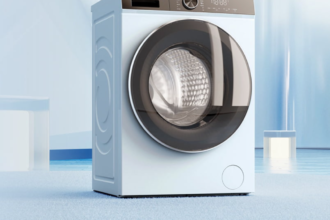A freestanding tub, from the name, is a type of bathtub that stands on its own. Some popular choices that fall into this category include soaking tubs, clawfoot tubs, and many more. Freestanding tubs come in different design choices within each type. This article will walk you through some of its types alongside a buying guide.
1. Single Ended Tub
The single-ended tub is a traditional style that is often found in many homes. It features drains and faucets at one end and an elegant curve and slope for comfortable lounging at the other end. This tub is ideal for one person to use at a time because it has a single headrest on one side.
Visit here
2. Double Ended Tub
Instead of the gentle slope at one side seen in the single-ended tube, the double end has a slope at both sides. This makes it the right choice for two people to fit in comfortably. The drain and faucet are located at the center, and the tub is bigger than the single option.
It also features two equal-height headrests on both sides, and it’s considered an elegant and modern design. Some of its perks include added function, comes in modern and vintage style options, makes a statement in your bathroom, and has various options for faucet placement.
3. Soaking Tub

These tubs are named because they have deeper-than-average dimensions, making them the perfect choice for individuals who want to be fully submerged in water while bathing. They come in different sizes and shapes, can be up to 32 inches deep, are available in many materials, and are ideal for muscle soreness.
Keep in mind that these tubs are so deep that they will require a large water heater, and since they are deeper than the regular ones, they are heavy. If you choose heavy materials like cast iron, you will need to ensure that the tub is on the bottom floor, so you don’t need to reinforce floorboards. And this tub is often more expensive than the other types.
4. Japanese Soaking Tub
This is like soaking tubs; it features a round and smaller footprint but is extremely deep. It’s an ideal option for people with smaller bathrooms. Some of the perks of this tube are that it saves space, it has a unique and modern outlook, it comes with accessories like built-in seats, and the water height usually reaches the shoulder.
Overall, this tub type has a smaller length but a deeper profile and an integrated seat. It means someone with an average physique can comfortably submerge themselves with the water reaching their shoulders. The drains are faucets at the opposite end of the rest. Also, just like any soaking tub, the Japanese style is more expensive than the regular ones.
5. Pedestal Tub

Also called skirted tubs, pedestal tubs look exactly like you expect. They are freestanding tubs with a pedestal base. They come in any of the four styles mentioned above. Its name is skirted because it has a skirt that raises it slightly off the floor for added weight.
It’s a low-maintenance variation of the clawfoot tub and comes in both Victorian and modern styles, oval and rectangular shapes. It can fit in all kinds of bathrooms and make a statement. Lastly, it has various faucet placement options.
6. Clawfoot Tub
Most people know the clawfoot tub because it’s an old and traditional tub that has been around for many years. In fact, it’s the freestanding bathtub that started it all. It was common around the 1800s. It’s the traditional style of the modern tubs, you know, and also happens to look natural even when placed in modern bathrooms.
It’s also a unique and elegant option that adds a vintage visual appeal to whichever bathroom it’s placed. It comes in both vintage and modern style options, can fit different types of bathrooms regardless of size, is easy to maintain, and you can find it in various material options.
Click here to learn more about clawfoot tubs.
Just like pedestal tubs, claw feet also come in a slipper, double slipper, single-ended, and double-ended. They are versatile and can be installed and comfortably fit in any area of the bathroom. But keep in mind that if you are planning to install it away from the wall, plumbing outages may be required, which can incur additional charges.
How to Choose
- Your budget
The first thing to consider when choosing a tub is your budget. Eliminate any option that doesn’t fall into your price list and check out those you can afford.
- Your space
Consider the dimensions and compare them with your space. Will it fit nicely into it, or do you need something bigger or smaller?
- Your needs
Do you want to immerse yourself in water, or is it aesthetics that matters to you the most? Consider the main use of the tub before getting quotes.
- Materials
Freestanding tubs are crafted from various materials, each with its distinct characteristics. The materials include epistome, stone, acrylic, cast iron, and copper. Stone is elegant and durable, acrylic is lightweight, warm to the touch, and easy to maintain; cast iron is known for its durability and heat retention, while copper offers a luxurious look.
Visit https://www.wikihow.com/Install-a-Bathtub to learn about installing a bathtub.
Conclusion
Whether you are looking for a classic claw foot or a more contemporary design, a freestanding bath fan enhances your bathroom function and makes it an appealing environment. It comes in different styles to choose from because you don’t need to wear it between walls or be covered by panels.
As the name suggests, freestanding baths can place in any area of the bathroom; you can choose to go for the middle to make it a focal point or just cozy up to a window. Installing this bath is also easier than installing a built-in bath. All you need to do is sort out the drainpipe and where the filler tap goes.
You don’t need to worry about connecting it to the wall or filling in more tiling; what’s more, you can move it around your bathroom if you don’t like where it’s sitting currently or when there is a need for adjustment.














